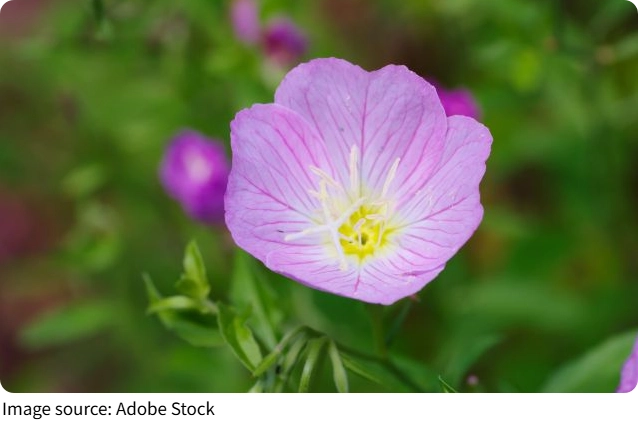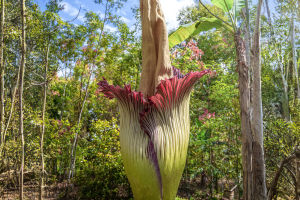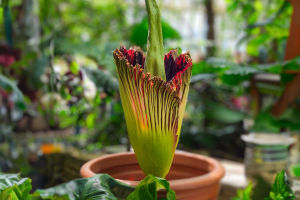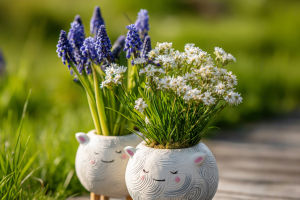Moonlit Bloom

Have you ever wandered outside on a quiet night and stumbled upon a flower blooming under the moon's soft glow? One such flower is the Ipomoea alba, commonly known as the Moonflower.
This stunning plant has captured the imaginations of many, thanks to its ability to bloom exclusively at night, filling the air with its intoxicating fragrance.
It's a perfect example of how nature adapts to its environment, and in the case of the Moonflower, it thrives under the quiet, cool cover of night.
In this article, we'll delve into the enchanting characteristics of the Ipomoea alba, explore its nighttime blooming behavior, and uncover what makes this flower so special.
What is the Ipomoea Alba?
The Ipomoea alba, also known as the Moonflower or Moonvine, is a climbing plant that belongs to the morning glory family. Its vines can grow rapidly, often reaching impressive heights. The plant produces large, white, funnel-shaped flowers that are most beautiful when they bloom under the cover of night. Known for its fragrant blossoms, Ipomoea alba thrives in tropical and subtropical climates, making it a popular choice for gardens and trellises in warmer areas.
Moonflowers have a unique growing pattern, and their flowers are typically nocturnal, opening in the late afternoon and closing by early morning. This characteristic makes them quite different from many other plants that bloom during the day.
The Magic of Nighttime Blooming
The most captivating feature of the Ipomoea alba is, without a doubt, its ability to bloom at night. While most flowers open up during daylight hours to attract daytime pollinators like bees, the Moonflower chooses to save its beauty for the night.
When dusk begins to fall, the delicate white petals of the Moonflower slowly unfurl, revealing their full size and beauty. The flowers bloom in the soft light of the moon, giving off an otherworldly glow. The fragrance they release is sweet, subtle, and often described as a combination of jasmine and gardenia. It's the kind of fragrance that is most noticeable in the cool of the evening, wrapping around the garden like a gentle perfume.
This phenomenon of blooming at night serves a very practical purpose: Ipomoea alba is primarily pollinated by nocturnal insects, such as moths. These insects are naturally attracted to the strong fragrance, and in turn, they help transfer pollen from flower to flower, ensuring the plant's reproduction. The combination of scent and moonlit beauty makes this flower an irresistible attraction for its nighttime pollinators.
The Flower's Lifecycle: Open and Close
Another fascinating aspect of the Ipomoea alba is its relatively short flowering window. While some flowers may remain open for days, the Moonflower's bloom lasts only a single night. It opens at dusk and begins to close as the first light of dawn appears. By morning, the flowers have closed, awaiting the next evening's moonlight to bloom again.
This rapid cycle may seem short, but it allows the plant to maximize its pollination opportunities while minimizing the exposure to daytime heat. It's a perfect adaptation to its environment. While the flowers may only last one night, their ephemeral beauty is part of what makes them so captivating.
Why the Nighttime Flower?
The timing of the Ipomoea alba's bloom is a result of evolutionary strategies designed to help it thrive in its natural habitat. As mentioned, the primary pollinators of this plant are moths, which are more active during the night. By blooming at night, the Moonflower ensures that its pollinators have direct access to the flowers, thus increasing the chances of successful pollination.
Additionally, blooming at night helps the Moonflower avoid the intense daytime heat, which could damage the delicate petals. The cooler nighttime temperatures also protect the flower's fragrance, making it more potent and attractive to pollinators.
Caring for the Moonflower
If you're inspired by the beauty of the Ipomoea alba and want to bring this fascinating flower into your garden, it's essential to understand its specific care requirements. The Moonflower thrives in well-drained, fertile soil and enjoys full sunlight during the day. However, it will only bloom in the evening, so it needs to be planted in an area where it can receive plenty of sunlight during the day to fuel its nighttime activity.
It's also important to note that the Moonflower is a fast-growing plant that can quickly cover trellises, fences, and other vertical spaces. It prefers a warm climate, so if you live in a cooler region, it's best to plant it in containers that can be moved inside during colder months.
Watering should be done regularly, but make sure the soil is not waterlogged. Pruning back the vines at the end of the growing season helps the plant stay healthy and promotes new growth the following year.
Moonflower
Video by Manju Handa Organic Gardening
Conclusion: An Enchanting Night Bloom
The Ipomoea alba is more than just a beautiful flower—it's a reminder of how nature works in harmony with the environment. Its moonlit blooms, sweet fragrance, and the short but magical lifespan of each flower make it an unforgettable experience for anyone lucky enough to witness its nightly performance. Whether you're strolling through a garden or planting one yourself, the Moonflower offers a unique and enchanting experience that is sure to brighten any evening.
Have you ever encountered a Moonflower blooming under the night sky? If so, we'd love to hear about your experience! Share your thoughts and stories in the comments below, and let's continue to marvel at the wonders of the natural world together.


